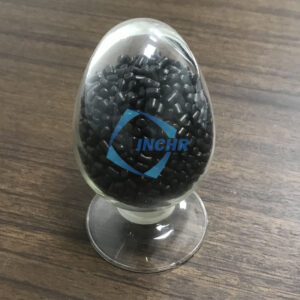Manufacturing method of graphene conductive PVC
Usually, there are melt blending, solution blending, and in-situ polymerization. Among them, the melt blending method is to mix graphene and PVC in a molten state, and then make products through processes such as extrusion or injection molding; the solution blending method is to dissolve graphene and PVC in a solvent respectively, and then combine the two. Mix evenly, and then make products by evaporating the solvent and other methods; the in-situ polymerization method is to polymerize graphene and PVC monomers in the reaction system to directly generate graphene-conductive PVC products. Graphene conductive PVC material has the advantages of good conductivity, wear resistance, high-temperature resistance, and antistatic properties, and has broad application prospects in electronic and electrical components, wires and cables, automobile manufacturing, aerospace, and other fields.
Graphene conductive PVC wear resistance performance
The addition of graphene can enhance the strength and hardness of the material to a certain extent, thereby improving its wear resistance. At the same time, PVC itself also has certain wear-resistant properties. However, the specific degree of wear resistance will also be affected by various factors such as graphene content, dispersion uniformity, preparation process, and actual use environment. In some application scenarios, it can show excellent wear resistance and meet certain usage requirements. However, compared with some specialized high wear-resistant materials, the performance under some extreme conditions may be different.

Graphene conductive PVC has the following advantages over traditional PVC
- Electrical conductivity: Graphene-conductive PVC has good electrical conductivity, while traditional PVC is usually a poor conductor of electricity. This makes graphene-conductive PVC advantageous in some applications that need to be conductive or anti-static, such as electronic equipment housings, anti-static floors, etc.
- Mechanical properties: The addition of graphene can enhance the mechanical properties of PVC materials, such as improving tensile strength, modulus, and wear resistance. This makes graphene-conductive PVC more advantageous in some applications where the strength and durability of the material are required.
- Thermal conductivity: Graphene has high thermal conductivity, so graphene-conductive PVC may have better thermal conductivity. This may be beneficial for some applications that require heat dissipation, such as heat sinks for electronic devices.
- Antistatic properties: Graphene-conductive PVC can effectively reduce surface resistivity and reduce the generation and accumulation of static electricity. This is of great significance in preventing damage to electronic equipment from electrostatic discharge and improving product safety.
- Functionality: By adjusting the content and processing methods of graphene, graphene conductive PVC can be given other special functions, such as antibacterial properties, flame retardancy, etc., to expand its application fields.
- Processing properties: In some cases, the processing properties of graphene conductive PVC may be similar to traditional PVC, making it easy to manufacture and process into products of various shapes and sizes.
It should be noted that the performance advantages of graphene-conductive PVC are not absolute. The specific performance will also be affected by factors such as the quality, dispersion, formula design, and application requirements of the graphene. In actual applications, evaluation and selection need to be made based on specific needs. In addition, the cost of graphene-conductive PVC can be relatively high, which is one of the factors that need to be considered in the application.




